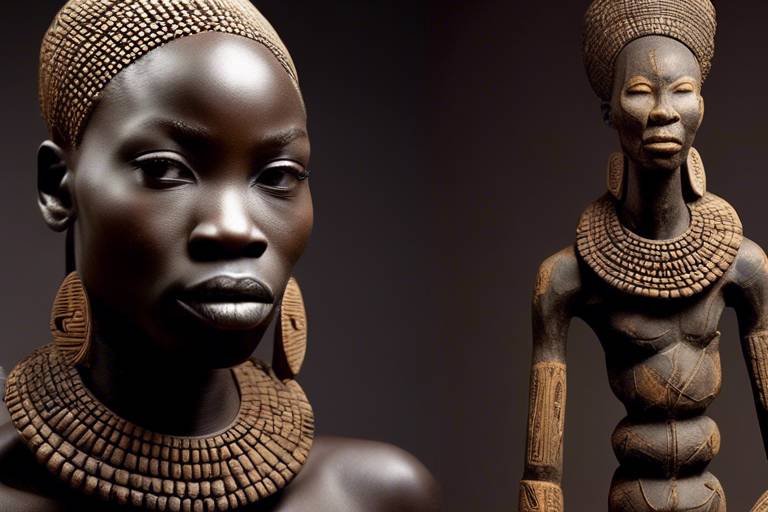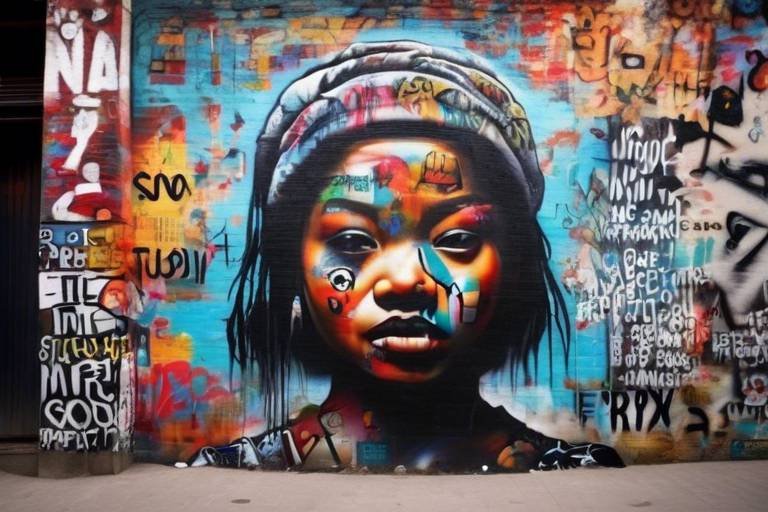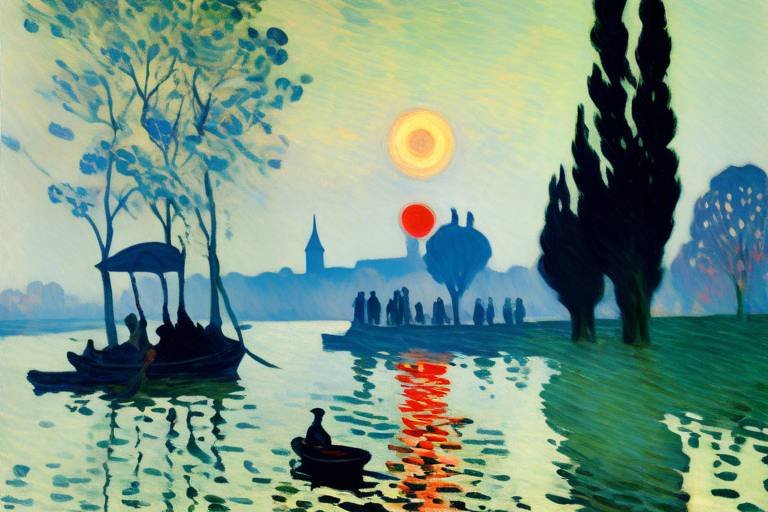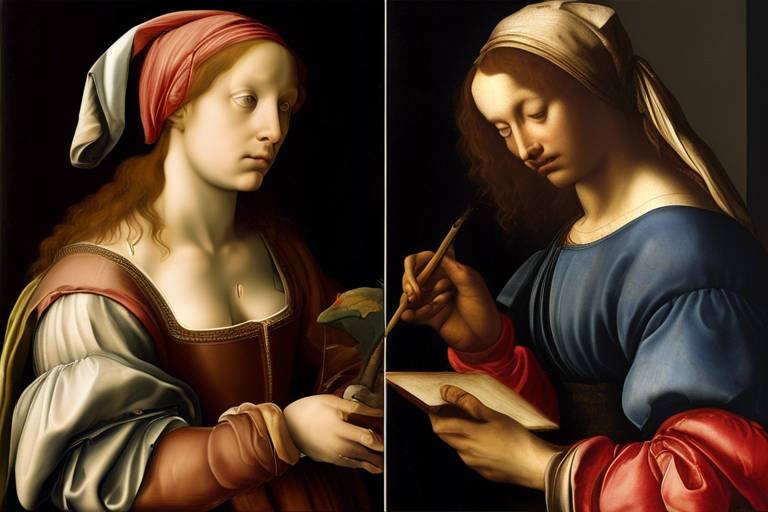The Connection Between Art and Healing in Traditional Cultures
Art has been deeply intertwined with healing practices in traditional cultures across the globe. The intrinsic connection between artistic expression and the enhancement of health and well-being has been a cornerstone of indigenous societies for centuries. Through various art forms and creative processes, individuals have found solace, healing, and spiritual connection, transcending mere aesthetics to delve into the realm of healing.

Art as a Therapeutic Tool
Art as a therapeutic tool holds a profound significance in traditional healing practices, transcending mere aesthetics to become a gateway for emotional expression and spiritual connection. Through the act of creating art, individuals are able to delve into their innermost thoughts and feelings, allowing for the release of pent-up emotions and the exploration of subconscious realms.
Artistic expression has the power to heal trauma by providing a safe space for individuals to confront and process their past experiences. Whether through painting, sculpting, dancing, or singing, the creative process enables individuals to externalize their internal struggles, transforming pain into beauty and chaos into harmony.
Moreover, art serves as a bridge to spiritual realms in traditional cultures, where symbolism and sacred imagery are imbued with healing energies and divine connections. By engaging with art forms that hold spiritual significance, individuals can tap into higher states of consciousness, accessing wisdom and guidance beyond the material world.
Art therapy, as practiced in traditional healing settings, goes beyond the surface level of artistic creation to delve into the subconscious mind, unveiling hidden traumas and unresolved emotions. Through guided artistic activities, individuals can navigate their inner landscapes, uncovering insights and revelations that contribute to their healing journey.

Rituals and Ceremonies
Rituals and ceremonies are integral components of traditional healing practices in various indigenous cultures, serving as profound expressions of spirituality, community, and healing. These sacred events often incorporate a blend of art forms, including dance, music, and visual arts, to create powerful experiences that promote well-being and harmony.
Within these rituals, individuals participate in symbolic actions and performances that are deeply rooted in cultural traditions and beliefs. The use of symbolic gestures, costumes, and props holds significant meaning, guiding participants on a transformative journey towards healing and restoration.
Artistic expressions during rituals and ceremonies not only serve as a form of communication with the spiritual realm but also as a means of connecting individuals with their cultural heritage and collective identity. Through these shared experiences, participants forge strong bonds with one another, fostering a sense of unity and support within the community.
The rhythm and movement inherent in traditional dances and music played during ceremonies have a profound impact on the participants, evoking emotional responses and facilitating the release of negative energies. Visual arts, such as intricate designs and sacred symbols, further enhance the ceremonial experience, creating a multisensory environment that engages participants on multiple levels.
Moreover, rituals and ceremonies often follow specific protocols and sequences, guided by spiritual leaders or healers who hold knowledge passed down through generations. These practices emphasize the importance of respect, intention, and mindfulness, creating a sacred space where healing can occur on physical, emotional, and spiritual levels.

Symbols and Meanings
Symbolism in traditional art forms holds profound meanings that go beyond mere aesthetics. In traditional cultures, symbols are imbued with significance related to healing, spirituality, and cultural identity. These symbols serve as a visual language, communicating complex ideas and emotions within the context of healing practices. For example, a specific color or geometric pattern may represent healing, while a particular animal symbolizes strength or protection. Understanding the symbolism embedded in traditional art allows individuals to connect with deeper layers of meaning and tap into the healing power of these ancient symbols.
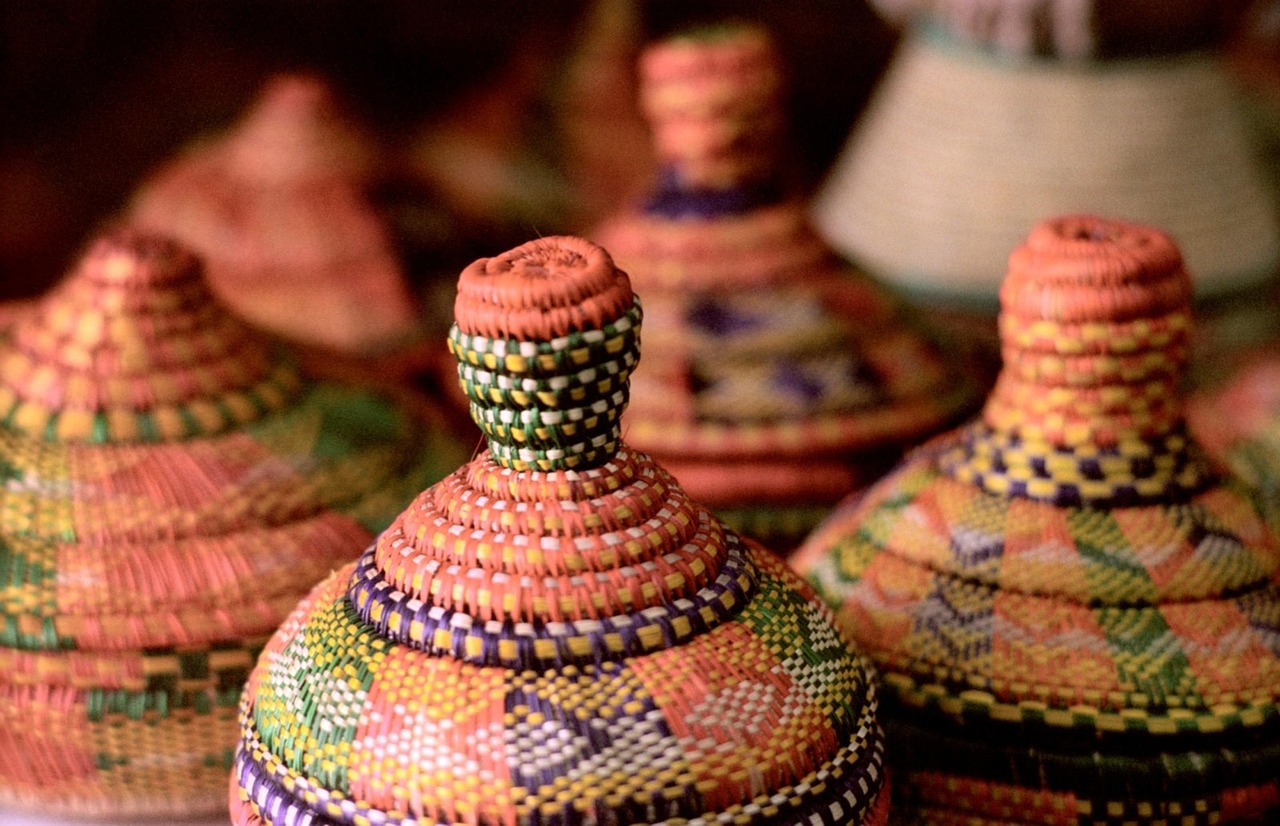
Community and Connection
In traditional healing settings, the sense of community and connection plays a vital role in the healing process. Through artistic activities, individuals come together to share their experiences, emotions, and support each other on their healing journeys. The communal aspect of art in traditional cultures creates a supportive environment where participants feel understood and valued, enhancing the overall well-being of the community.
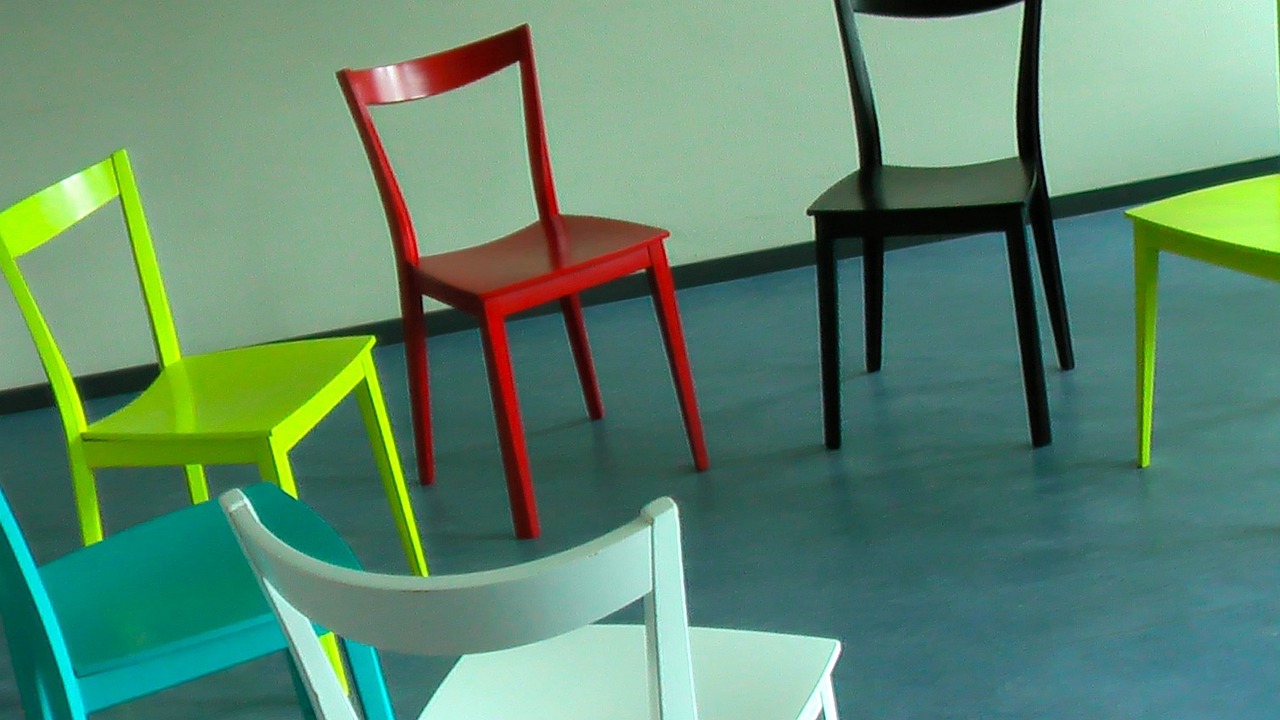
Nature and Art Therapy
In traditional cultures, the integration of nature into artistic practices plays a vital role in the healing process. Nature has a profound impact on individuals' well-being, inspiring creativity, promoting relaxation, and fostering a deep connection between humans and the environment. When individuals engage in artistic activities surrounded by natural elements such as forests, rivers, or mountains, they often experience a sense of peace and harmony that enhances their healing journey.
Art therapy in natural settings allows individuals to immerse themselves in the beauty and tranquility of the surroundings, facilitating emotional expression and self-reflection. The therapeutic benefits of nature combined with artistic creation create a holistic approach to healing, addressing not only physical but also emotional and spiritual aspects of well-being. Nature serves as a source of inspiration and renewal, nurturing the soul and promoting inner balance.

Healing Through Storytelling
Storytelling is a universal human experience that transcends time and culture, serving as a powerful medium for healing in traditional societies. Through various art forms such as oral traditions, dance, and visual narratives, individuals share personal experiences and collective wisdom, weaving narratives that hold profound healing potential. These stories are not merely tales but vessels of emotional expression, offering a cathartic release and a means of processing trauma and hardships.
In traditional healing practices, storytelling is not just about recounting events; it is a sacred act that connects individuals to their past, present, and future. Through the art of storytelling, individuals can find solace, understanding, and a sense of belonging within their communities. The shared narratives create a collective identity and foster empathy and compassion among participants, strengthening the bonds of kinship and support in times of need.
Moreover, storytelling in traditional cultures is a dynamic process that evolves with each telling, adapting to the needs and emotions of the storyteller and the audience. The fluidity of storytelling allows for personal interpretations and insights, offering a space for reflection and introspection. Through the act of storytelling, individuals can reframe their experiences, find new perspectives, and embark on paths of healing and transformation.
Art forms intertwined with storytelling, such as music, dance, and visual arts, enhance the healing journey by engaging multiple senses and channels of expression. The rhythmic beats of a drum, the graceful movements of a dance, or the vivid colors of a painting all contribute to the immersive experience of storytelling, creating a holistic approach to healing that addresses the mind, body, and spirit.
Storytelling in traditional healing practices is not just about words; it is a tapestry of emotions, memories, and hopes woven together to create a narrative of resilience and strength. Each story shared becomes a thread in the fabric of healing, connecting individuals to their roots, their communities, and the universal human experience of overcoming adversity.

Artifacts and Healing Objects
Artifacts and healing objects created by traditional artisans hold significant healing properties and spiritual meanings within indigenous communities. These objects are not merely decorative but are imbued with the power to promote healing and well-being. Crafted with intricate designs and symbols, these artifacts serve as tools for rituals, ceremonies, and individual healing practices.
In many traditional cultures, specific artifacts are believed to possess unique healing properties. For example, a talisman may be created to ward off negative energies, while a ceremonial object could be used to invoke spiritual guidance during healing ceremonies. These objects are considered sacred and are treated with utmost respect and reverence by community members.
Artisans who create these healing objects often undergo rigorous training and spiritual preparation to infuse the artifacts with the intended healing energies. The process of crafting these objects is seen as a sacred act, with each stroke and symbol carrying profound meaning and intention behind it.
Healing objects are not limited to physical artifacts but can also include natural elements such as herbs, stones, or animal parts, each chosen for their specific healing properties. These objects are used in conjunction with rituals and ceremonies to facilitate the healing process and restore balance within individuals and communities.
Furthermore, the exchange or gifting of healing objects is a common practice in traditional cultures, symbolizing the sharing of knowledge, support, and goodwill among community members. These objects serve as tangible reminders of the interconnectedness between individuals and the natural world, reinforcing the belief in the healing power of art and spirituality.

Preservation and Revival
Efforts to preserve and revive traditional art forms and healing practices are essential for maintaining cultural heritage and promoting holistic well-being in contemporary societies. By safeguarding ancient artistic traditions, communities can ensure that valuable knowledge and wisdom are passed down to future generations, fostering a sense of continuity and connection with their cultural roots.
Reviving traditional healing practices not only honors the legacy of ancestors but also offers modern individuals alternative approaches to health and wellness. Through the revival of ancient rituals and ceremonies, communities can tap into the profound healing potential embedded in their cultural practices, addressing not only physical ailments but also emotional and spiritual imbalances.
Preservation efforts often involve collaboration between cultural institutions, local artisans, and community members dedicated to safeguarding traditional art forms. By documenting techniques, materials, and symbolic meanings associated with indigenous artworks, researchers and practitioners contribute to the preservation of intangible cultural heritage, ensuring that traditional healing knowledge remains accessible and relevant in today's world.
Reviving traditional art forms and healing practices also serves as a form of resistance against cultural erasure and homogenization. In a globalized world where dominant narratives often overshadow marginalized voices, the revitalization of traditional arts becomes a powerful act of reclaiming identity, asserting autonomy, and celebrating diversity.
Frequently Asked Questions
- What is the significance of art in traditional healing practices?
Art plays a crucial role in traditional healing practices by serving as a therapeutic tool for emotional expression, trauma healing, and spiritual connection. It allows individuals to communicate complex emotions and ideas through creative processes, promoting overall health and well-being.
- How do rituals and ceremonies involving art contribute to healing?
Rituals and ceremonies incorporating art forms like dance, music, and visual arts help restore balance and harmony within individuals and communities. These practices create a supportive environment, fostering community connections and providing a space for shared experiences and healing journeys.
- What role do symbols and meanings in traditional art play in healing?
Symbolism in traditional art holds deep meanings related to healing, spirituality, and cultural identity. These symbols act as a visual language, conveying profound ideas and emotions within healing contexts, enriching the healing process and strengthening cultural connections.
- How does storytelling through art contribute to healing in traditional cultures?
Storytelling through various art forms such as oral traditions, dance, and visual narratives is a common method of healing in traditional cultures. It allows individuals to share personal experiences and collective wisdom, fostering healing and promoting emotional well-being.
- Why are efforts to preserve traditional art forms important for healing practices?
Efforts to preserve and revive traditional art forms are crucial for maintaining cultural heritage and promoting holistic well-being in contemporary societies. These practices recognize the enduring significance of art in the healing process and ensure the continuation of valuable healing traditions.


